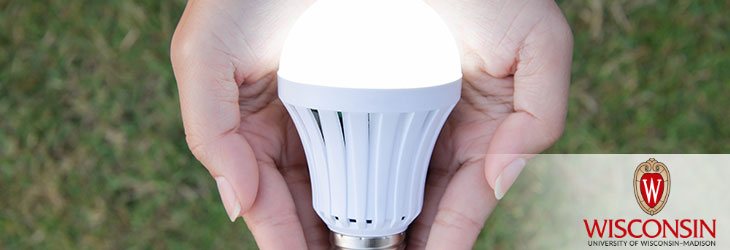Clean Technology

Prolonging Solar Cell Life
WARF: P130136US01
Inventors: Hongrui Jiang, Xi Zhang, Xuezhen Huang
The Wisconsin Alumni Research Foundation (WARF) is seeking commercial partners interested in developing a technique that uses electrical pulses to keep dye-sensitized solar cells working efficiently.
Overview
Dye-sensitized solar cells (DSSCs) have attracted tremendous attention because they are cheap and efficient. The DSSCs with the highest power conversion efficiency (greater than 12 percent) are based on liquid electrolytes. However, leakage and evaporation can be a problem.
Efforts have been made to replace liquid electrolytes with solid-state materials like gels and polymers. Polymer electrolytes are especially promising given their low cost, stability and easy fabrication. One drawback is that these solar cells can lose efficiency over time as ion-transport channels in the electrolyte become blocked.
Efforts have been made to replace liquid electrolytes with solid-state materials like gels and polymers. Polymer electrolytes are especially promising given their low cost, stability and easy fabrication. One drawback is that these solar cells can lose efficiency over time as ion-transport channels in the electrolyte become blocked.
The Invention
UW–Madison researchers have developed a simple technique to open the ion channel blockages that cause non-liquid DSSCs to lose efficiency over time.
In the technique, a power source is connected to a solar cell’s electrodes to apply pulses of voltage and provide forward electrical bias. This injects new electrons into the electrolyte and redistributes its ions, forcing the channel-blocking ions to move. The result is improved efficiency.
In the technique, a power source is connected to a solar cell’s electrodes to apply pulses of voltage and provide forward electrical bias. This injects new electrons into the electrolyte and redistributes its ions, forcing the channel-blocking ions to move. The result is improved efficiency.
Applications
- Recovering degraded DSSCs
Key Benefits
- Recovers lost efficiency
- Hardware is easy to implement.
- Consumers save time and resources.
- Voltage is not high enough to cause damaging dark currents.
Additional Information
For More Information About the Inventors
Related Technologies
Publications
For current licensing status, please contact Mark Staudt at [javascript protected email address] or 608-960-9845
- Zhang X., Huang X. and Jiang H. 2013. Recovering Degraded Quasi-Solid-State Dye-Sensitized Solar Cells by Applying Electrical Pulses. Phys. Chem. Chem. Phys.15, 6864 - 6869.